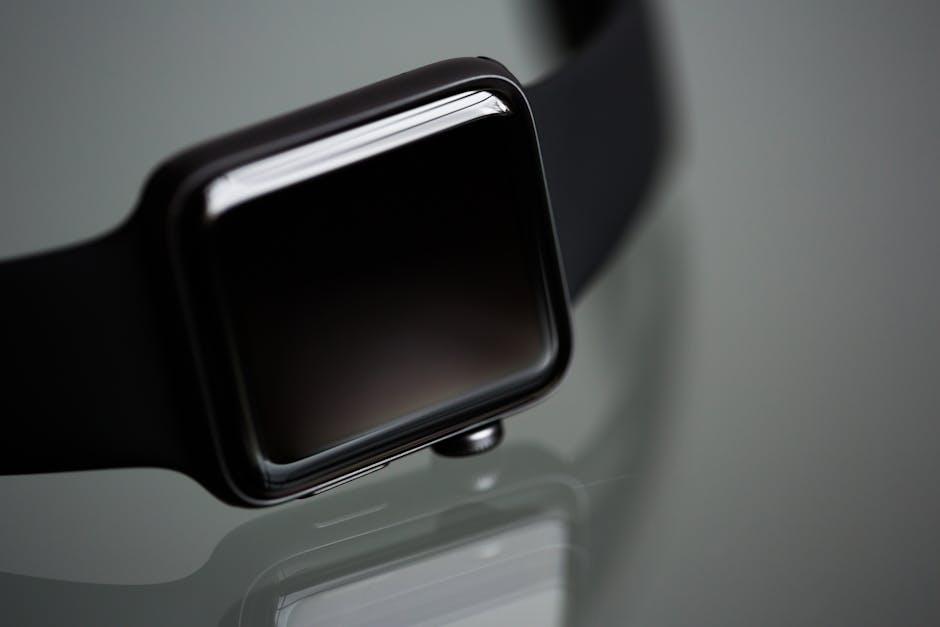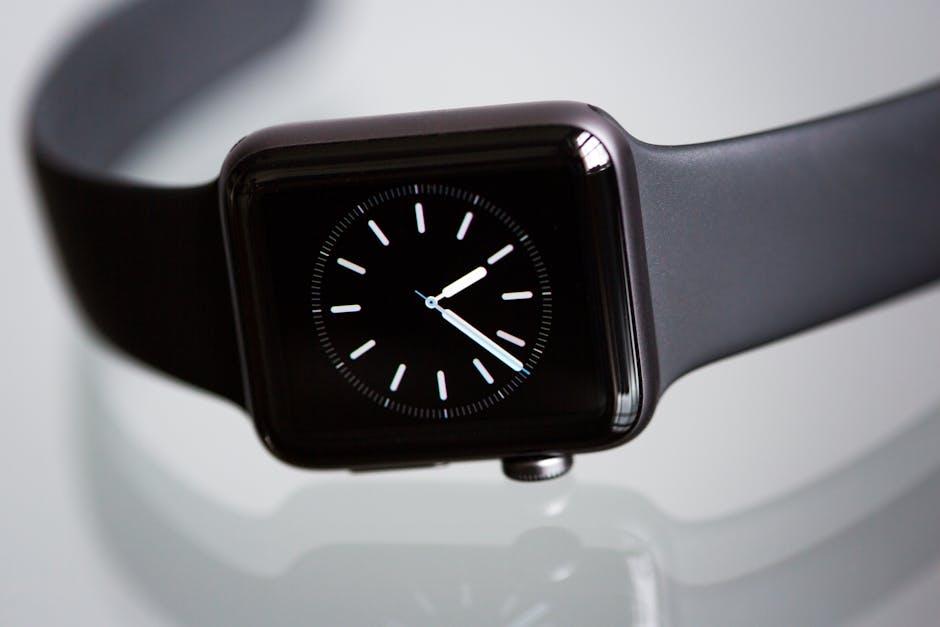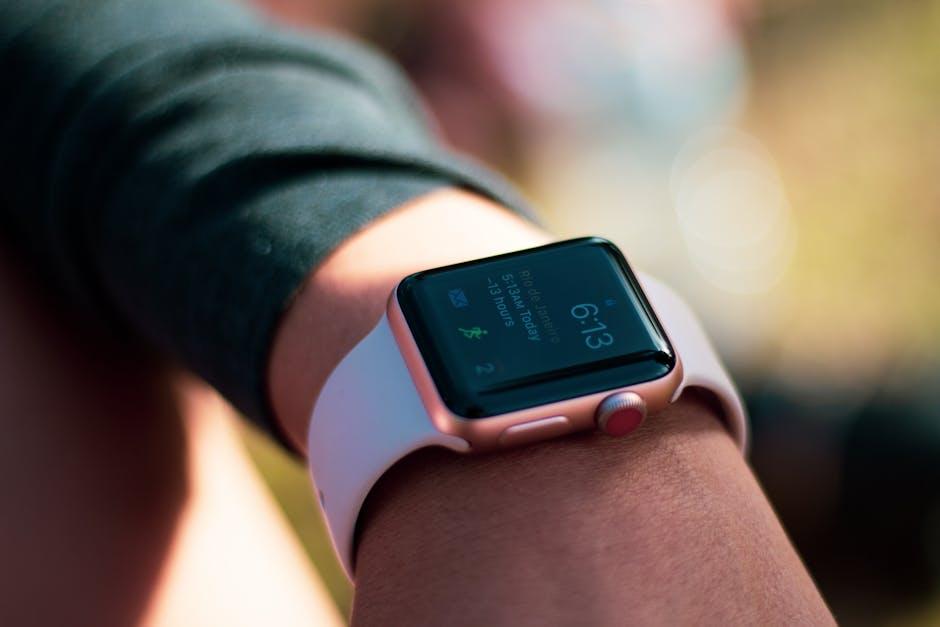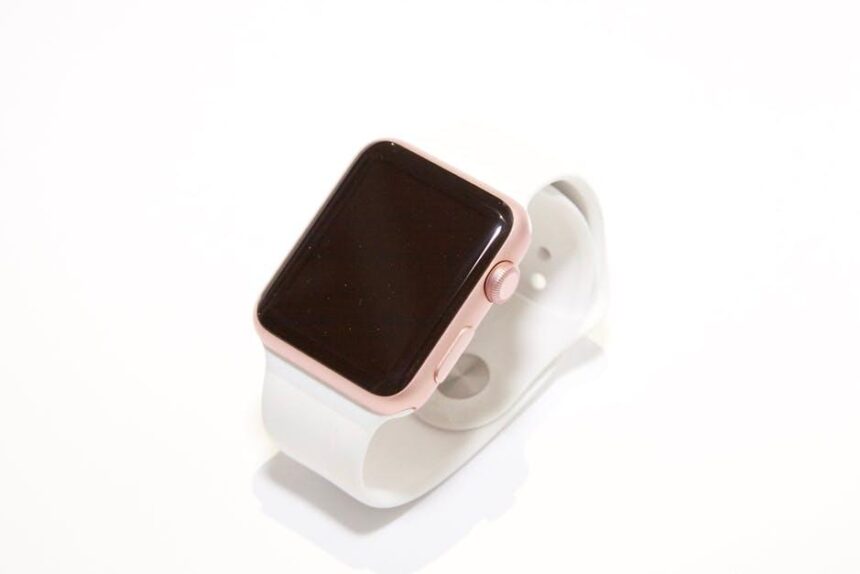In today’s fast-paced world, heart health has become increasingly paramount, prompting a revolution in how we monitor our well-being. Enter the Apple Watch ECG app-a powerful tool that empowers users to take control of their cardiovascular health right from their wrists. This guide will explore the intriguing functionalities of the ECG feature, shedding light on how it works, its benefits, and its role in the broader context of heart health monitoring. Whether you’re tech-savvy or simply curious about enhancing your health journey, this article will navigate you through the essentials of using the Apple Watch ECG app to unlock valuable insights into your heart’s rhythm and wellbeing.
Understanding the ECG Feature and Its Benefits for Heart Monitoring
The ECG (electrocardiogram) feature on your Apple Watch is a groundbreaking tool for heart health monitoring. This feature allows users to conduct a quick and easy ECG test, offering insights into their heart rhythm and potential irregularities. Understanding how to utilize this feature effectively can empower you to take charge of your cardiovascular health.
Here’s how the ECG function works:
- Heart Rhythm Monitoring: The ECG app tracks your heart’s electrical signals, providing readings that can reveal signs of atrial fibrillation (AFib), a common heart rhythm irregularity.
- Convenience: With the ECG feature, you can conduct a test anywhere, anytime. Just place your finger on the watch’s crown, and within 30 seconds, you’ll receive a detailed reading.
- Data Storage: Your ECG results are saved in the Health app, allowing for easy sharing with healthcare professionals. This can be vital for monitoring ongoing heart conditions.
- Educational Insights: The app provides a clear interpretation of your results, helping you understand what they mean for your health.
Let’s dive into the benefits:
| Benefit | Description |
|---|---|
| Early Detection of Issues | Regular ECG tests can help catch potential heart problems early, allowing for timely intervention. |
| Empowerment Over Health | Knowing your heart’s status gives you control and can encourage lifestyle changes that improve overall health. |
| Cost-Effective | Accessing ECG testing through your watch can reduce the need for frequent doctor visits, saving you time and healthcare costs. |
| Comprehensive Health Overview | When combined with other health metrics from the Apple Watch, the ECG feature contributes to a fuller picture of your overall wellbeing. |
Staying proactive about heart health is essential. By utilizing the ECG feature on your Apple Watch, you can seamlessly integrate heart monitoring into your daily routine, making it easier to stay informed and healthy.

Interpreting Your ECG Readings: Key Insights for Better Heart Health
Interpreting your ECG readings can feel overwhelming, but understanding key elements can empower you to take charge of your heart health effectively. Your Apple Watch’s ECG app provides valuable insights into your heart’s electrical activity, giving you a real-time look at your health.
Here are some key components to look for when reviewing your ECG readings:
- Heart Rate: This is the number of times your heart beats per minute (BPM). A normal resting heart rate for adults ranges from 60 to 100 BPM.
- Rhythm: Look for the regularity of the heartbeats. An irregular rhythm may indicate conditions like atrial fibrillation (AFib).
- Waveforms: The ECG prints out waveforms representing electrical impulses. Familiarize yourself with the P wave, QRS complex, and T wave, as they provide insights into heart function.
- QT Interval: This measures how long it takes for your heart to recharge between beats. Abnormally long or short QT intervals can indicate heart health issues.
To help you better understand these components, here’s a quick reference table:
| Component | Description | Normal Range |
|---|---|---|
| Heart Rate | Beats per minute | 60 – 100 BPM |
| Rhythm | Regularity of heartbeats | Regular |
| QT Interval | Time between heartbeats | 0.34 – 0.43 seconds |
Once you’ve identified these key aspects, it’s essential to recognize any abnormal findings. If you notice:
- A persistent irregular rhythm
- A significantly high or low heart rate
- Unusual waveforms
…it’s crucial to consult with a healthcare professional. They can provide a more in-depth analysis and recommend further testing if needed.
By staying informed and proactive, you can make better decisions about your heart health, leading to a happier and healthier life.

Integrating Daily Habits: How to Enhance Heart Wellness with Your Apple Watch
Integrating daily habits that promote heart health into your lifestyle can be seamlessly achieved with the Apple Watch. This advanced device not only tracks physical activity but also provides critical health insights that can empower you to make informed decisions. Here’s how you can leverage your Apple Watch to enhance heart wellness:
- Daily Activity Tracking: Make use of the Activity Rings feature to set achievable fitness goals. Aim for at least 30 minutes of moderate exercise each day, which can significantly lower your risk of heart disease.
- Heart Rate Monitoring: Regularly check your heart rate using the built-in heart rate sensor. This can help you understand how your body responds to exercise and everyday stress. An irregular heart rate might indicate the need for a follow-up with a healthcare professional.
- ECG App Usage: Take advantage of the ECG app to record your heart’s electrical activity. This can help detect sinus rhythm or atrial fibrillation, a condition that may increase the risk of stroke. Consult with your doctor if you see abnormal readings.
- Notifications and Alerts: Set up notifications for irregular heart rhythms and elevated heart rates. Being proactive about these alerts can prevent potential health issues before they escalate.
- Mindfulness and Breathing Exercises: Within the Breathe app, integrate short breathing sessions throughout your day. These moments of mindfulness can reduce stress and positively impact heart health.
To make the most of your Apple Watch, consider these additional tips:
| Feature | Benefit |
|---|---|
| Workout App | Track various workouts including swimming, cycling, and running to stay motivated. |
| Sleep Tracking | Monitor your sleep patterns to ensure you are getting adequate rest, which is critical for heart health. |
| Activity Compatibility | Sync your Apple Watch with other health apps to consolidate your wellness data. |
By consistently engaging with these features, your Apple Watch becomes more than just a gadget-it’s a proactive partner in fostering heart wellness. Remember, consulting with healthcare providers when interpreting data is crucial, ensuring you take the right steps towards a healthier heart.

Troubleshooting Common ECG Challenges and Maximizing Your Device’s Potential
Using the ECG feature on your Apple Watch can be a game-changer for managing your heart health, but you might encounter a few challenges. Here are some common issues users face and strategies to maximize your device’s potential.
- Improper Positioning: Ensure your wrist is in a stable position when taking an ECG reading. Your heart rate monitor relies on good contact with your skin, so try resting your arm on a flat surface.
- Noise Interference: Electronic devices nearby can interfere with readings. Turn off or move away from such devices to get a clearer signal.
- App Glitches: If the ECG app crashes or does not respond, restart the app. If problems persist, consider rebooting your watch.
- Skin Condition: If your skin is too dry or oily, it can affect the sensors. Clean your wrist and the watch sensor to ensure accurate readings.
- Wrist Movement: Avoid moving your wrist while taking a reading. Any motion can lead to inaccuracies, so stay still.
To ensure you’re getting the most out of your Apple Watch ECG function, follow these tips:
- Regular Monitoring: Make ECG readings a regular part of your routine. Consider scheduling weekly checks to monitor your heart health.
- Record Symptoms: Take note of any symptoms like palpitations or dizziness. This information can be invaluable during consultations with a healthcare provider.
- Understand the Results: Familiarize yourself with normal ECG values, which typically range from 60-100 bpm for a resting heart rate. Consult with a physician if your results consistently fall outside this range.
- Sync with Health Apps: Use the Apple Health app to track and analyze your ECG readings over time, offering insights into your heart health trends.
- Consult Professionals: If you notice any irregularities in your readings, don’t hesitate to reach out to a healthcare provider. They can interpret your results accurately and recommend necessary actions.
By following these guidelines, you can enhance your experience with the Apple Watch ECG app, ensuring more accurate readings and better heart health management.

To Wrap It Up
As we navigate the landscape of personal health technology, the Apple Watch ECG stands out as a powerful ally in the pursuit of heart health. With its capability to detect irregularities and offer insights into your cardiovascular well-being, this innovative feature empowers users to take charge of their health like never before. However, as with any tool, understanding its limitations and the context of your unique health profile is essential. By embracing this technology thoughtfully, you not only gain access to valuable health data but also foster a proactive approach to your heart health journey. So, strap on your Apple Watch, explore the ECG app, and make informed decisions that echo your commitment to a healthier, more vibrant life. Your heart deserves it.














